If you get an error popup saying Windows Push Notifications User Service has stopped working or The Windows Push Notifications User Service terminated unexpectedly, we got your back. In this post, we will discuss what to do when the Windows Push Notifications User Service is not working correctly.
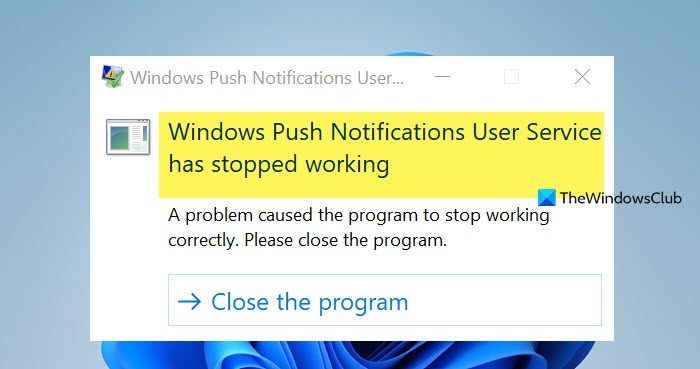
What is Windows Push Notification User Service?
The Windows Push Notification Services (WNS) lets third-party developers send toast, tile, badge, and raw updates from their own cloud service. This makes it easy to deliver new updates to users in an efficient and reliable way.
Windows Push Notifications User Service has stopped working
If the Windows Push Notifications User Service has stopped working on your Windows 11/10 computer, do the following:
- Check WpnUserService services status
- Run SFC
- Run DISM
- Reset the corrupted Notifications database
- Turn off WpnUserService service via Registry Editor.
1] Check WpnUserService services status
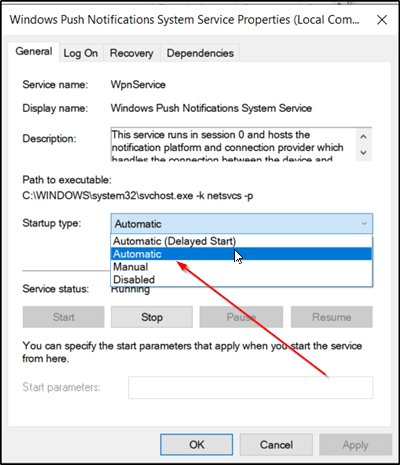
The Windows Push Notification User Service Startup type should be set to Automatic.
This service runs in session 0 and hosts the notification platform and connection provider which handles the connection between the device and WNS server.
Press Win+R to launch the ‘Run’ dialog box. When the box opens, type ‘services.msc‘ in the empty field of the box and click OK.
Next, when the ‘Services‘ section opens up, find the entry named ‘Windows Push Notification User Service‘.
Right-click on it, and change the ‘Startup‘ type to ‘Automatic‘
Click OK.
2] Run SFC
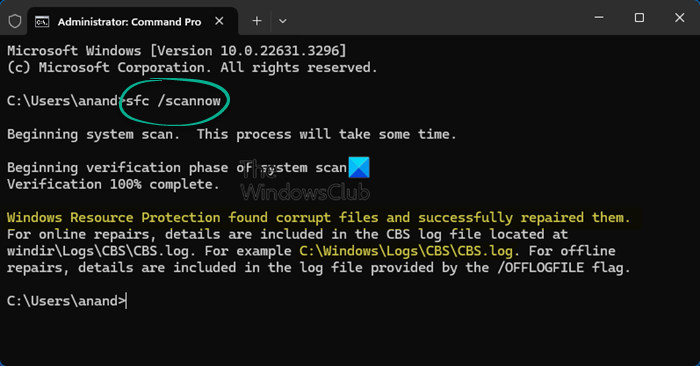
Running SFC allows you to scan for and restore corrupt Windows system files. So Run System File Checker and see.
3] Run DISM
Deployment Image Servicing and Management tool or DISM is a tool that scans your Windows computer for inconsistencies and system corruption. So, run DISM and see if your problem is fixed.
4] Reset the corrupted Notifications database
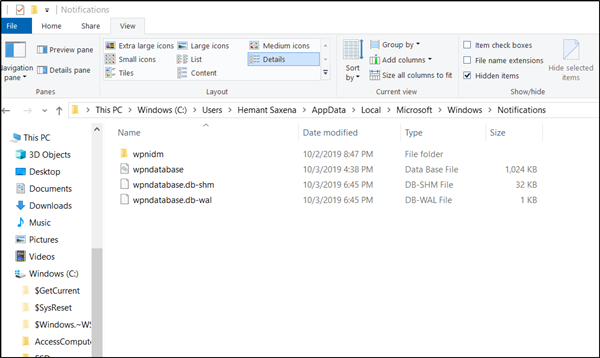
At times, the Notifications database (wpndatabase.db) can get corrupted following a Windows 11/10 update. This can cause this error to flash on your screen. So, to fix it, you can try and recreate a new database simply by renaming or deleting the Notifications folder. For this,
Open File Explorer and navigate to the following location.
C:\Users\YOURUSERNAME\AppData\Local\Microsoft\Windows
Make Windows show hidden files and folders and then locate the ‘Notifications‘ folder inside the Windows folder.
Right-click on it, and choose ‘Rename’ from the context menu that appears.
Rename the folder to something like ‘Old-Notifications’ and, when prompted, confirm the changes.
Finally, restart your computer and check to see if the problem is resolved.
4] Turn off WpnUserService service via Registry Editor
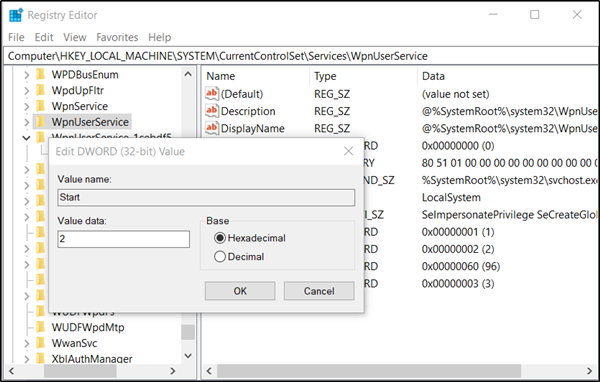
Try this method as the last resort when all other methods have failed to yield the desired results – know that when you do this, your system will not be able to push any notifications.
Press Win+R, type regedit.exe into the Run dialog box, and click Ok button to open the Registry Editor.
Navigate to the following path address –
HKEY_LOCAL_MACHINE\SYSTEM\CurrentControlSet\Servcies\WpnUserService
There, select the WpnUserService sub-folder and go to its right-side pane. There, double-click on the Start REG_DWORD, and change its value data to 0.
Return to the Services tree, and repeat the same procedure to make changes to WpnUserService_1cebdf5 (It can be any random number).
Finally, close the Registry Editor and exit.
We hope something here helps you.
How do I restart Windows Notification service?
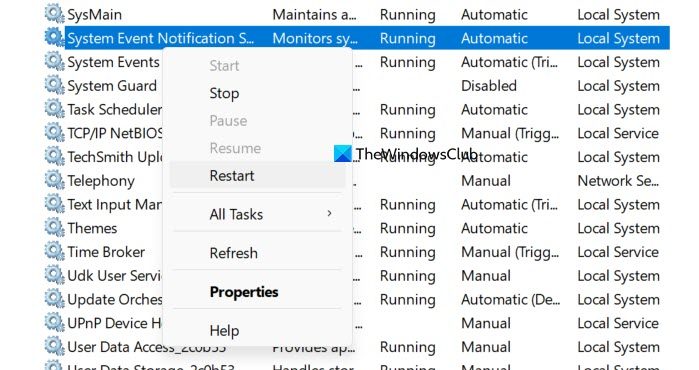
You can restart the System Event Notification service from the Services app. So, open the Services app by searching it out of the Start Menu. Look for “System Event Notification Service”, right-click on it, and select Restart.
Also Read: Hide Notification Content on Lock Screen on Windows 11.